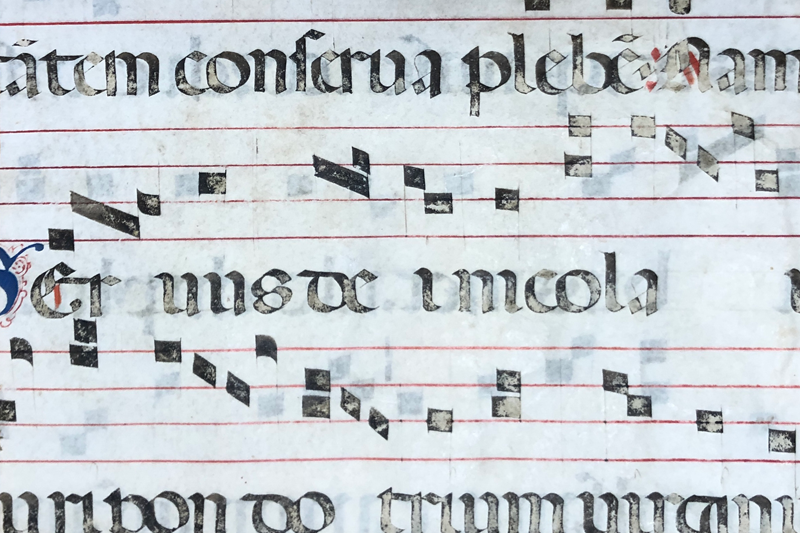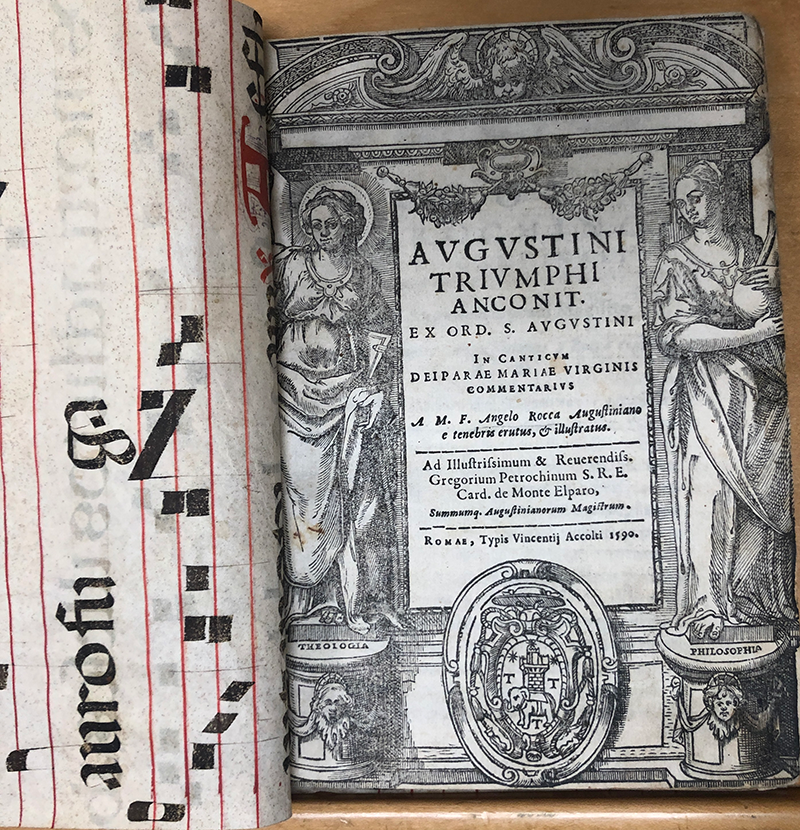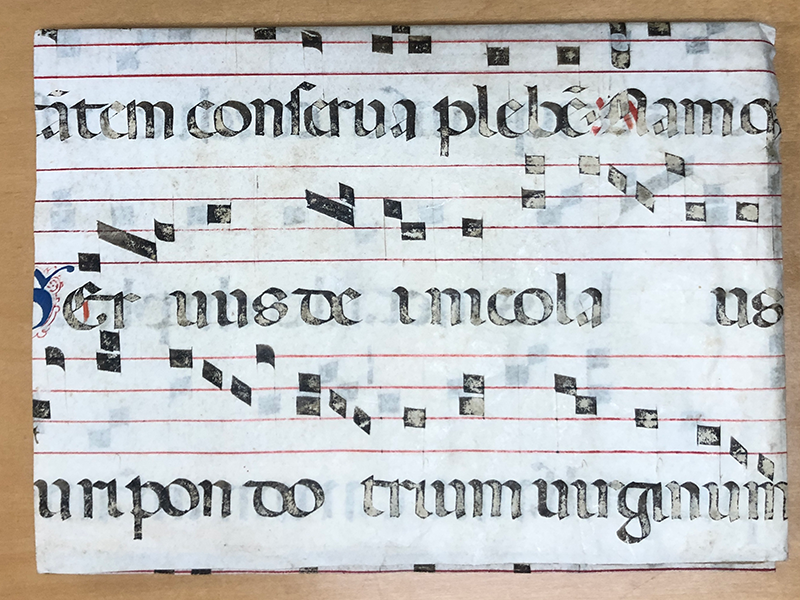Blogs

Saints Alive!
By Henry Handley
What do a fourth-century bishop from Asia Minor and the Magnificat have in common? One manuscript fragment, recycled as a temporary binding for a 16th-century commentary on the Canticle of Mary, has an increased relevance on Dec. 6 every year.
The late-medieval manuscript fragment, once part of a graduale, or a large choir book for singing Mass, was intended to serve as temporary covers (known as wrappers) for the printed commentary sometime after its printing in 1590. The fragment is made from parchment — stretched and dried animal skin — that has endured in part because parchment is more durable than paper, even as the red and black inks on the cover have flaked due to handling and shelf wear. The fragment’s survival could indicate an early owner of humble means, perhaps a student, as well as later owners’ potential interest in manuscript culture, music history, and/or monastic life. In any case, it is especially striking on the feast day for which it was used.
Before Bishop Nicholas of Myra from present-day Turkey became St. Nick, there was a transitional point in his mythos, documented by this fragment: The Latin versicle and responsory were chanted on his feast day of Dec. 6. The text references medieval legends that the saint saved three sisters from being sold into prostitution by their father and rescued three children from being killed and eaten during a famine. The second legend led to the tradition of giving gifts to children in Europe on Dec. 6, which also led to St. Nicholas’ association with — or absorption into — the Christmas traditions of Santa Claus.
The book and its fragment binding complement each other and some activities we might already be involved in this December: reflecting on what Mary’s fiat means in uncertain times (including our second pandemic Advent season); examining how saints’ legends are connected to cultural histories; the role of justice in liturgical and intellectual traditions; and the material documentation of faith practices.
If you’re interested in learning more about this or other rare books with recycled manuscript fragments, check out our earlier blog post Recycling Book History: Manuscripts as Bindings or email marianlibrary@udayton.edu to make an appointment to see one.
— Henry Handley is an assistant professor and collections librarian in the Marian Library.


